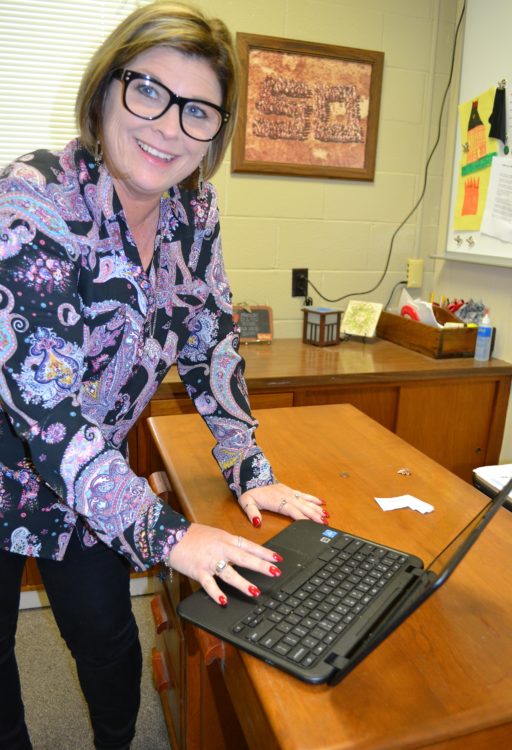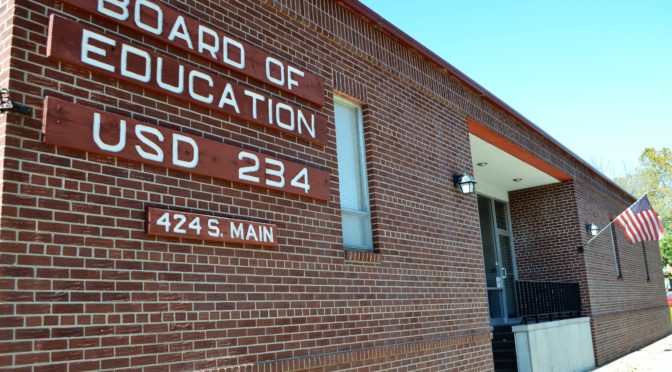
Options.
Additional options are what Nicki Traul, USD 234 director of curriculum says is a good reason to offer school classes at home for students.
“Students for all reasons; medical, parent choice, multiple reasons find that a brick-and-mortar school isn’t for them,” Traul said. “High school isn’t a good fit for everyone.”
One example Traul gave is supporting a student who had surgery and wasn’t able to attend school, she said.
USD 234 started offering home-school options to junior and senior high students one year ago.
The school district initially looked at home-school options for students who failed a course and had to retake it, she said.
“I had worked at Greenbush (Southeast Kansas Education Service Center), and had a background in virtual learning,” Traul said.
But lest students think this is an easy way out of not having to attend classes at school, Traul says this option is not for everyone.
“You have to be disciplined,” she said. “You have to put in 30 hours per week and at least six classes…about the same as a brick-and-morter school. You can be truant if not putting hours into the school work. ”
“We meet with the student and parents,” Traul said. “I want them to fully understand it’s not easy. They have to be self-driven.”
During an initial orientation, students learn “all the ins and outs of the system,” she said.
Full-time students are provided with a computer on which to do assignments, with internet service to be provided by the student.
The computer is turned in at the end of the year, she said.
The district uses a state-approved system, Edgenuity, which has teachers instructing a lesson.
Edgenuity is a provider of K-12 online and blended learning solutions including online courses, credit recovery, intervention, and test preparation, according to its’ website.
The system is available 24 hours a day, seven days a week, she said.
Parents and students can meet with Traul at any point in the year.
A part of the program is letting students know if “they are on track or behind” in progress during the semester, she said.
Students must pay high school fees that other students are required to pay.
Funding for the initiative is from the U.S. Department of Education, rural and low-income school program.

Who are the teachers? Does it have live lessons or just recordings or anything like that?
Live lessons given by teachers according to Mrs. Traul.
Okay. Thank you
You’re welcome. I’m not sure who the teachers are. Possibly contact Mrs. Traul at the board office?